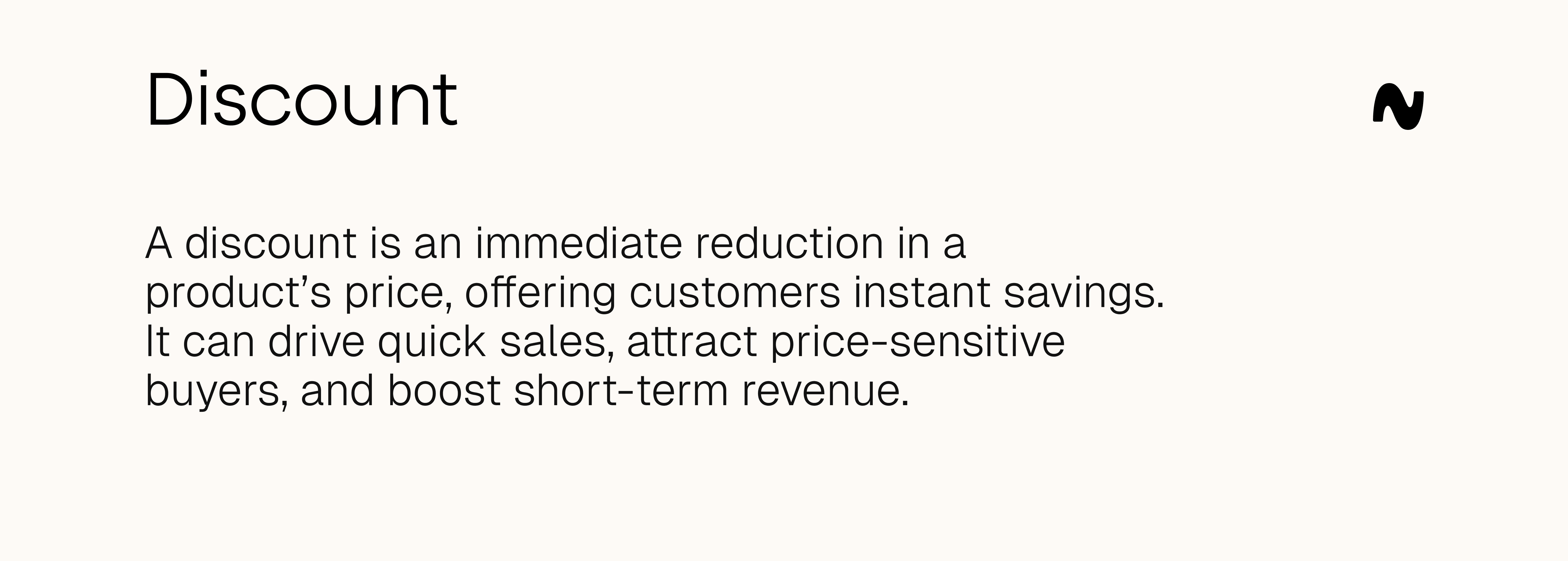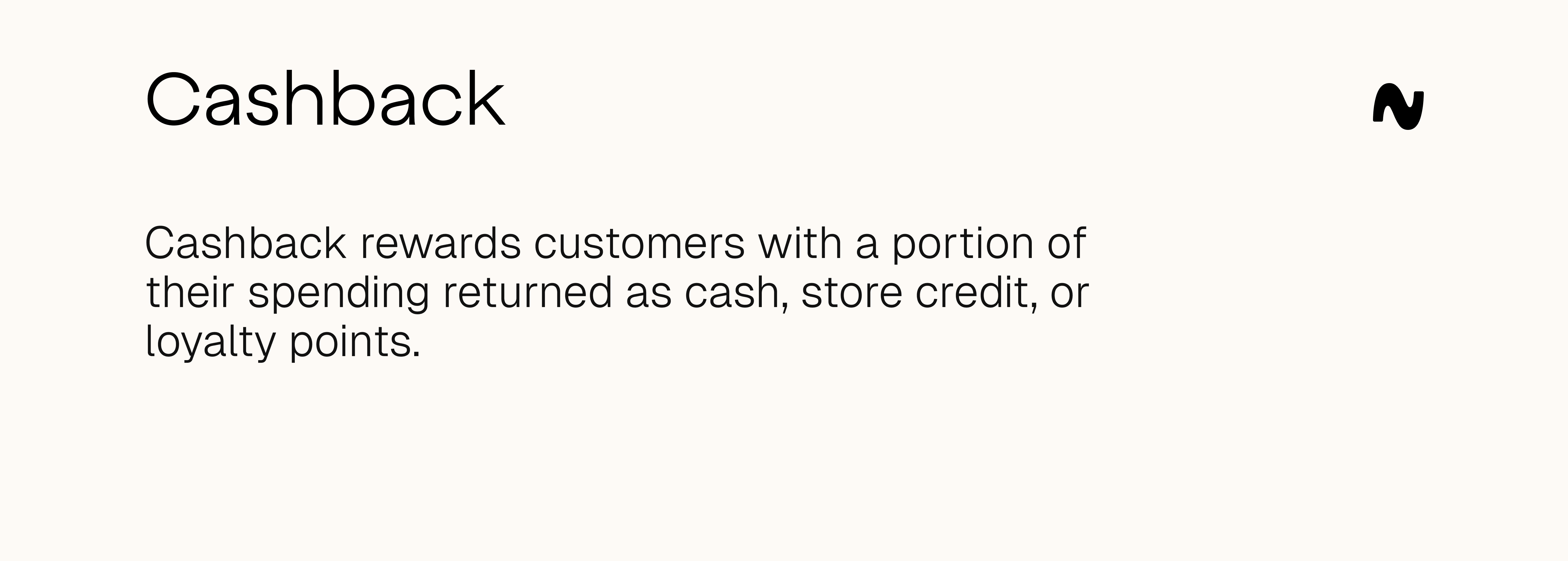October 13, 2025
– 5 minute read
Discover the key differences between discount vs cashback, their benefits for customers and businesses, and how to choose the right strategy for growth.

Cormac O’Sullivan
Author
When businesses think about promotions, two strategies dominate the conversation: discounts and cashback. Both can spark excitement, shift customer behaviors, and increase sales. But the choice isn’t just about offering savings it’s about aligning with your long-term strategy, profit margins, and customer retention goals.
In the debate of discount vs cashback, the real question isn’t which is universally better, but which is right for your business at the right time.

What is a Discount?
A discount is an immediate reduction in a product’s price, offering customers instant savings. It can drive quick sales, attract price-sensitive buyers, and boost short-term revenue. However, frequent discounts can train customers to expect lower prices, potentially eroding profit margins and long-term brand value.

What is Cashback?
Cashback rewards customers with a portion of their spending returned as cash, store credit, or loyalty points. Unlike discounts, it encourages repeat purchases and long-term engagement. While it may not drive immediate sales like discounts, cashback enhances customer retention and creates a sense of ongoing value.
Benefits for Consumers
Immediate Savings vs. Future Rewards
When considering discounts vs cashback, the first benefit for consumers is how they experience savings. Discounts provide immediate gratification, customers feel rewarded instantly as they pay less at checkout. This can be especially appealing for price-sensitive shoppers who expect lower prices and are focused on short-term budgeting.
On the other hand, cashback offers delayed rewards. Customers may receive money back, store credit, or loyalty points after their purchase. While the benefit is not immediate, it creates a sense of anticipation and encourages long-term engagement, rewarding customers for continued interaction with the brand.
Flexibility in Spending and Budgeting
Discounts reduce the upfront cost, making products more accessible but limiting flexibility after the purchase. Cashback, however, empowers consumers to decide how to use their rewards. They might apply it toward future purchases, invest in higher-value items, or save for later.
This flexibility enhances financial planning and allows shoppers to optimize their spending, making them feel more in control. It also trains customers to see the brand as offering ongoing value rather than a one-time deal.
Enhanced Shopping Satisfaction and Perceived Value
Both strategies improve perceived value, but in different ways. Discounts create a strong sense of immediate satisfaction; customers feel smart and savvy for paying less. Cashback fosters a sense of being rewarded and recognized by the brand, which can boost emotional attachment and loyalty.
When customers feel that their spending translates into tangible or future benefits, it increases shopping satisfaction and encourages repeat behavior. Studies suggest that combining immediate rewards with future incentives often maximizes engagement and enhances the overall shopping experience, aligning consumer satisfaction with brand objectives.
Benefits for Businesses
How Discounts Can Boost Sales Quickly
Discounts are a powerful way to drive immediate sales and capture customer attention. By lowering prices, businesses can attract both new and returning shoppers, encouraging them to make purchases they might otherwise postpone. While many consumers actively seek discounts, relying too heavily on them can backfire: repeated markdowns may train customers to expect lower prices and erode profit margins over time.
The key is strategic use of Short-term discount campaigns, such as seasonal sales or limited-time offers can clear inventory quickly and boost cash flow, without undermining the perceived value of your products.
How Cashback Encourages Repeat Purchases
Cashback promotions incentivize repeat business by rewarding customers for their loyalty. E-commerce platforms offering cashback rewards witness a 20% higher repeat purchase rate, indicating that customers are more likely to return when they perceive ongoing value.
Additionally, cashback programs can increase customer lifetime value by 23% compared to discount-driven acquisition strategies, as they foster deeper emotional connections and encourage sustained engagement.
Marketing and Customer Loyalty Advantages
Both discounts and cashback strategies offer distinct marketing advantages. Discounts can quickly attract attention and drive short-term sales, making them effective for clearing inventory or launching new products.
In contrast, cashback programs build long-term customer loyalty by providing rewards that encourage repeat purchases and enhance customer retention. Integrating cashback into loyalty programs can create a sustainable cycle of engagement, reducing customer acquisition costs and increasing lifetime value.
Picking the Perfect Offer: Discounts or Cashback?
Time to Results: Quick Wins vs. Long-Term Gains
When choosing between discount vs cashback, timing matters. Discounts deliver immediate results, as sales often spike as soon as the promotion goes live. This is ideal for clearing inventory, attracting new buyers, or boosting revenue in a short window.
Cashback, however, is a long-term play. Customers receive rewards after each purchase, which encourages repeat visits and strengthens loyalty. While the impact is slower, it supports sustainable growth and trains customers to engage with your brand over time.
Campaign Goals: Aligning Offers with Your Business Goals
The decision should reflect your business objectives. If the goal is immediate revenue and higher footfall, discounts can create urgency and increase conversion rates quickly. If your focus is customer retention, loyalty, and encouraging repeat purchases, cashback is more effective.
It creates a sense of ongoing value and integrates seamlessly into loyalty programs, helping businesses cultivate relationships rather than just one-time transactions.
Financial Implications: Which Saves More?
Discounts cut profit margins instantly and reduce full-price sales, which can impact cash flow if overused. Cashback, conversely, often spreads the cost over time, especially when issued as store credit or loyalty points, meaning not all rewards are redeemed immediately.
This can make cashback more cost-efficient, particularly for long-term retention campaigns, while still giving customers a tangible benefit.
Psychological Motivations: The Psychology Behind the Deal
Consumer behavior is heavily influenced by perception. Discounts provide instant satisfaction, making customers feel they are saving money now. Cashback fosters a sense of reward and investment in the brand, appealing to those who value delayed gratification.
Understanding these motivations allows businesses to craft offers that resonate with target audiences, either by triggering immediate action or encouraging continued engagement.
Conclusion
Choosing between discount vs cashback depends on your business goals, customer behaviors, and financial strategy. Discounts provide immediate savings, driving quick sales and creating urgency, but can erode profit margins and train customers to expect lower prices.
Cashback builds long-term loyalty, encourages repeat purchases, and integrates seamlessly with loyalty programs, though results are slower to show. The most effective strategy often combines both: use discounts for short-term gains and cashback to foster lasting engagement. By aligning offers with campaign goals, cash flow considerations, and psychological motivations, businesses can maximize both revenue and customer retention.



